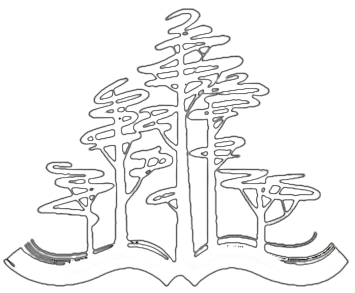Summer School on the Russian Literature. 2015.
Vol. 11. № 2
The article reconstructs the relationship between two publishing houses, „Apollo“ and „Musagetes“, on the base of the unpublished E. Medtner’s letter to E. Znosko-Borovsky. There is made a conclusion about ambiguous position of the „Apollo“ in the perception of contemporaries and about the publishing particularity in the 1910th.
Keywords: russian literature of the 1910th of the 20th century, The Silver age, simbolism, akmeism, publishing, „Apollo“, „Musagetes“, E. Medtner, E. Znosko-Borovsky, V. Ivanov, N. Gumilev.
Keywords: russian literature of the 1910th of the 20th century, The Silver age, simbolism, akmeism, publishing, „Apollo“, „Musagetes“, E. Medtner, E. Znosko-Borovsky, V. Ivanov, N. Gumilev.
Elena Glukhovskaya, Alexandra Chaban
„Apollo“ and „Musagetes“: Between struggle and compromise (to the story of one letter)
The structure of Anton Chekhov’s famous early story (1885) is analyzed from several points of view: revision of narrative stereotypes, rivalry between sorcery and medical science, narrativization of lists (of anthroponyms), ironic play with verbal magic, and the author’s own hesitation in choosing literature over medicine as his profession.
Keywords: narrative, stereotypes, horse, magic, sorcery, medicine, lists.
Keywords: narrative, stereotypes, horse, magic, sorcery, medicine, lists.
Alexander Zholkovsky
How Chekhov’s horse meme was made
Article is devoted to the analysis of the concept „second row“ of literature. The use of this term, its practical and theoretical contents is investigated.
Keywords: „Second row“, literature, literary process, history of literature, mass literature.
Keywords: „Second row“, literature, literary process, history of literature, mass literature.
Alexander Kobrinsky
On the problem of „second-row“ literature
(based on the material of Russian literature of the twentieth century)
(based on the material of Russian literature of the twentieth century)
This article studies cycle of I.F.Annensky’s poems „Quiet songs“ for clear up the question about typical features of „last songs“ and this specific realization. On the basis of modem literary concepts of cyclic unity as a genre form, we propose an extension of the cycle representations in terms of integrating, conceptual. Considering the „Quiet songs“ as part of the final book, to coincide with the experience of writing his fading life, we relate „Quiet songs“ with the cycles of „the last songs“ on a number of structural features. This was the reader to became a part of the act of writing since the process of reading is „slowed down“ („freezed“) but also externalizes the natural self-referential actualization of Annensky’s work.
Keywords: I. F. Annensky receptional mindset, „last songs“, cycle of poem, models of interpretation, reader’s concretization.
Keywords: I. F. Annensky receptional mindset, „last songs“, cycle of poem, models of interpretation, reader’s concretization.
Alice Pautova
The specifics of the implementation of the tradition of „last songs“ in the final book of poems by I. F. Annensky „Quiet songs“
This article offers a critical revision of the ubiquitous assumption of a genetic link existing between the poems „The Monkey“ (1919) by Vladislav Khodasevich and „With a Monkey“ (1907) by Ivan Bunin. The close inspection of literary and biographical sources shows that a homeless Balkan (usually a Serb) with a monkey and a tambourine (or a street organ), begging his way through the summer houses, was a person so common to the turn-of-the-century Russia, that any reference to Bunin’s poem was needless both for Khodasevich and his audience. If the two texts show any affinity, it was prompted by life, not literature.
Keywords: Vladislav Khodasevich (Chodasevič, Xodasevič), „The Monkey“, realia, Serbs in Russia at the beginning of XXth century, Russian First World War poetry.
Keywords: Vladislav Khodasevich (Chodasevič, Xodasevič), „The Monkey“, realia, Serbs in Russia at the beginning of XXth century, Russian First World War poetry.
Vsevolod Zelchenko
To the centenary of one handshake
Reality and fiction in the „Monkey“ by V. F. Khodasevich
Reality and fiction in the „Monkey“ by V. F. Khodasevich
This article analyzes the „Abyssinian songs“ of N. S. Gumilev which is created in the genre of kyne. In connection with genre context interpretation of the cycle is organized on two levels: realistic and allegorical.
Keywords: The Silver Age, acmeizm, N. Gumilev, kyne, allegory, poetic cycle.
Keywords: The Silver Age, acmeizm, N. Gumilev, kyne, allegory, poetic cycle.
Alexey Dubovtsev
On the problem of the genre of „Abyssinian songs“ by N. S. Gumilev
The article discusses the position of Nikolai Leskov and Pavel Florensky on Orthodox, old believers, the tradition of icon painting, the influence of creativity on Leskov attitudes Florensky.
Keywords: Nikolai Leskov, Pavel Florensky, faith, Orthodox, old believers, iconography, Christmas stories.
Keywords: Nikolai Leskov, Pavel Florensky, faith, Orthodox, old believers, iconography, Christmas stories.
Elena Shkapa
N. S. Leskov as the forerunner of P. A. Florensky
Contacts
summerschool@list.ru
В оформлении сайта использованы материалы Freepik.


